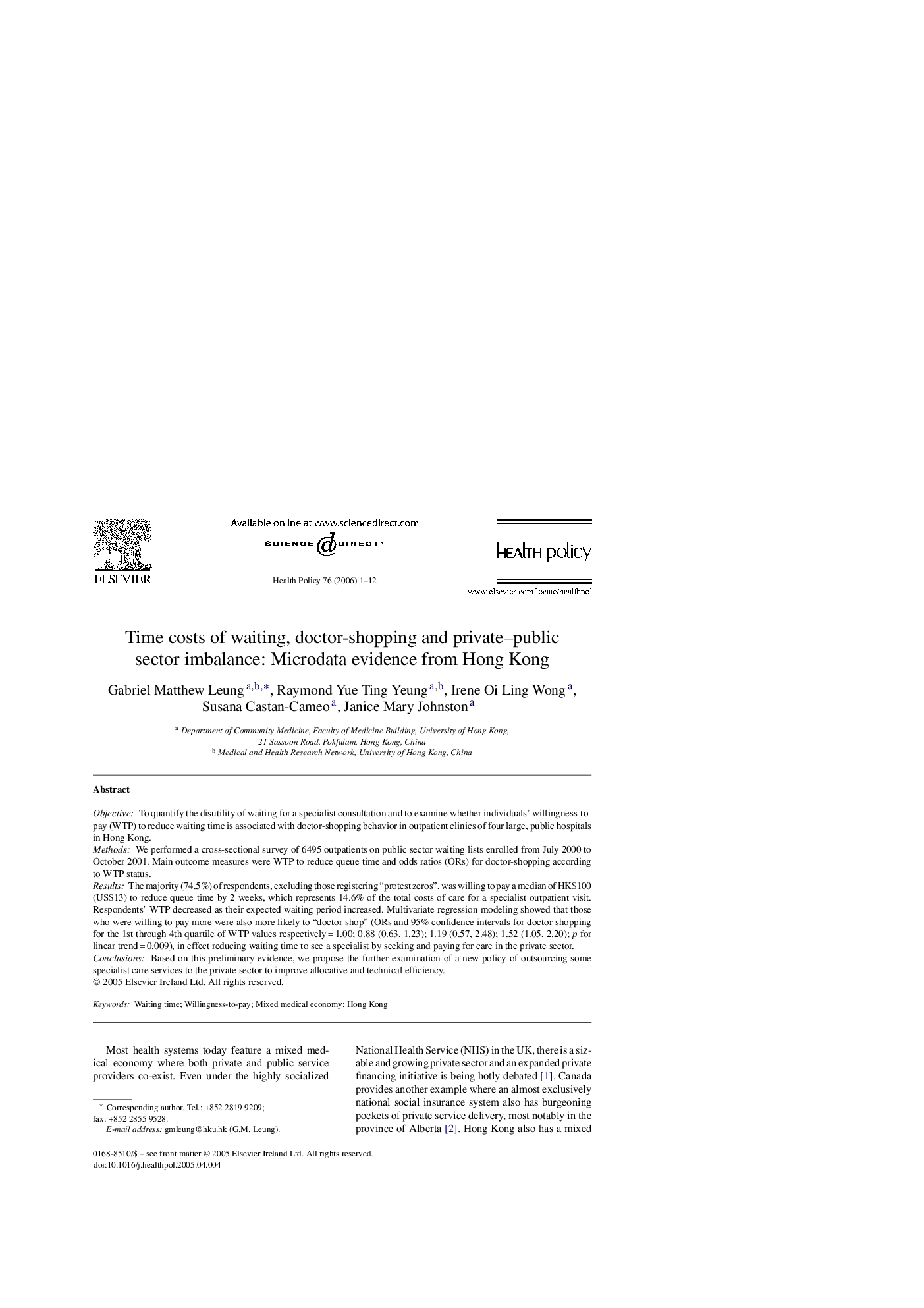| Article ID | Journal | Published Year | Pages | File Type |
|---|---|---|---|---|
| 4199098 | Health Policy | 2006 | 12 Pages |
ObjectiveTo quantify the disutility of waiting for a specialist consultation and to examine whether individuals’ willingness-to-pay (WTP) to reduce waiting time is associated with doctor-shopping behavior in outpatient clinics of four large, public hospitals in Hong Kong.MethodsWe performed a cross-sectional survey of 6495 outpatients on public sector waiting lists enrolled from July 2000 to October 2001. Main outcome measures were WTP to reduce queue time and odds ratios (ORs) for doctor-shopping according to WTP status.ResultsThe majority (74.5%) of respondents, excluding those registering “protest zeros”, was willing to pay a median of HK$100 (US$13) to reduce queue time by 2 weeks, which represents 14.6% of the total costs of care for a specialist outpatient visit. Respondents’ WTP decreased as their expected waiting period increased. Multivariate regression modeling showed that those who were willing to pay more were also more likely to “doctor-shop” (ORs and 95% confidence intervals for doctor-shopping for the 1st through 4th quartile of WTP values respectively = 1.00; 0.88 (0.63, 1.23); 1.19 (0.57, 2.48); 1.52 (1.05, 2.20); p for linear trend = 0.009), in effect reducing waiting time to see a specialist by seeking and paying for care in the private sector.ConclusionsBased on this preliminary evidence, we propose the further examination of a new policy of outsourcing some specialist care services to the private sector to improve allocative and technical efficiency.
